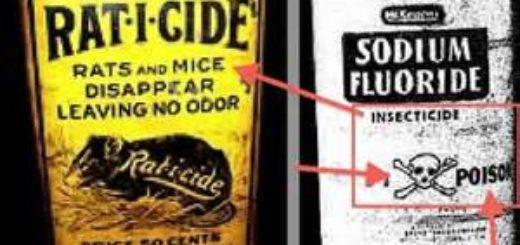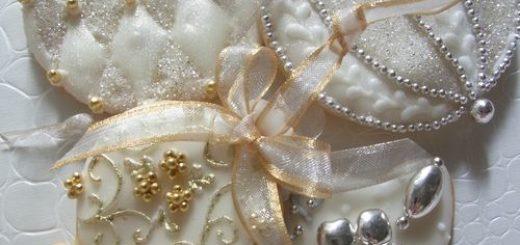Dog Almost Dies From Human Hair Dye-What Does That Tell You?
Dog Almost Dies From Human Hair Dye — What Does That Tell You?
- February 14, 2018 • 42,170 views
-
Edition: English

Story at-a-glance
- Products sold over-the-counter are not necessarily safe for you or your pets as a 5-pound Maltese mix demonstrated when her owner attempted to dye her hair purple, nearly killing the dog
- Hair dyes are not safe for use on children, and adults are experiencing greater rates of sensitization and allergic reactions
- Consistent use of hair dye is associated with an increased risk of asthma and bladder cancer, and has now been associated with a significant risk of breast cancer
- Salon workers have a much higher risk of suffering depression, cancers, asthma, dermatitis and neurological conditions than workers in many other job positions, related to the toxic chemicals to which they are exposed daily
- One of the best and healthiest products for your hair may be in your kitchen already, as coconut oil can be used to detangle, condition and even dye your hair with natural herbs
By Dr. Mercola
Just because a product is sold over-the-counter in stores, it does not mean it’s safe. There are nearly 13,000 chemicals found in personal care products sold in the U.S., and only 10 percent have been tested for safety. To compound the problem, the U.S. Food and Drug Administration (FDA) has the ability to regulate personal care products only after a product has demonstrated harm.1
Additionally, the FDA has handed over the responsibility of ensuring public safety to manufacturers whose financial health is dependent upon selling their products, and those manufacturers are not legally responsible to report adverse effects to the FDA.2 What this means is that while you may be health-conscious, body lotions, deodorants, soaps or shampoos you use may have harmful chemicals even if the product is labeled nontoxic and safe.
The average American woman uses 12 personal care products daily, containing an average of 168 chemicals.3 Men are exposed to nearly half that amount, but teens, who average 17 personal care products a day, are exposed to an even greater number.
This everyday exposure to toxic chemicals has been associated with a number of health conditions, including early ovarian dysfunction and menopause that may lead to early development of heart disease and osteoporosis. While personal care products may be hazardous for you, using these products on your pet may have lethal consequences.
Violet Demonstrates Dangers of Hair Dye
A 5-pound Maltese mixed dog named Violet recently brought to light the extreme danger owners put their dogs in when attempting to dye their fur using hair dye meant for people.4 The dog was brought to the Pinellas County Animal Services to be treated for her injuries, which included badly burned skin. Once at the facility, the staff washed as much of the chemicals off the dog as possible. Since dogs instinctively lick their coat, there was concern Violet may have suffered internal burns as well.
The next day she was put under anesthesia to have her coat shaved off. It was only at this point the staff recognized the extent of the damage to the dog’s skin, which started to slough off after being shaved.5 The hospital staff bandaged her, gave her antibiotics and intravenous fluids but was unsure if she would make it through the first night. After three months of arduous treatment, including honey, pain medication, continued antibiotics and bandage changes, Violet appears to have made a good recovery.
Violet is now in the care of a new owner who has experience grooming pets. Dyeing animal fur is not only stressful to the animal, but also increases the risk of chemical burns and allergic reactions, in much the same way these chemicals may affect you or your child.
Children and Adults at Risk Using Hair Dye
Many adults who use hair dye seek to cover gray hair or add highlights to their locks. In Europe, hair dye manufacturers warn their products are not designed to be used on children younger than 16.6 However, when a 12-year-old went undercover to test if salons would refuse hair treatment based on warnings, just one of 17 salons told her she was too young to have the color applied. Shirley Davis, industry expert and the Hair Council’s7 representative for Wales, U.K., viewed the results of the secret filming, saying:8
“I am absolutely appalled, they should’ve all said I’m sorry you’re not 16, we can’t do it and sent her away. Everyone within the industry is trying to professionalize it and we have salons that are actually contemplating coloring a young person’s hair. If they did something with this young girl and she had an anaphylactic shock she could die — that’s how serious it is. You have to patch test over-16 and under 16 it’s a no-no.”
People have been using hair dye to change their look for centuries. The synthetic dye process has been used for decades and continues to remain in practice. When you apply a synthetic-based hair dye, you first combine two chemicals that are not colored, in order to produce a chemical reaction that colors your hair.9
Early in development, hydrogen peroxide was used as a bleaching agent to extinguish your natural color and force a reaction between paraphenylenediamine (PPD) molecules, the basis of many permanent hair dyes on the market today. Other methods have been proposed, but many manufacturers continue to produce hair color with either PPD or a related compound, p-aminophenol.10
One of the issues with how dyes work is in the oxidative stress they place on your hair follicles and skin. The color molecules created in a chemical reaction become electron scavengers as they produce brown coloring. The need for electrons can’t be completely filled by the chemicals so the reaction pulls electrons from your skin. This is the basis for allergic reactions and potential DNA damage.11
David Lewis, Ph.D., emeritus professor at the University of Leeds in the U.K., acted as a consultant for cosmetic companies for years until his discomfort in using the same oxidative formula in hair dye triggered the launch of a company aimed at developing safer consumer products.
Lewis worries the beauty industry has too much power over the safety of consumer products and commented on the process that continues to be used in hair dye, saying,12 “Now, I know a lot about dyes and dye stuffs in the textile industry. We would never dream of using this on textiles. Primitive, archaic, all these things come to mind. Why do they persist on putting it on human heads?”
Progressive Sensitization Increases Your Risk of Injury and Illness
After researchers found women who used permanent hair dye once a month were at a much higher risk of developing bladder cancer,13the European Union (EU) took notice and recommended a reassessment of the safety regulations of distributed hair dye. During the past decade, the Science Committee on Consumer Products (SCCP), a commission mandated by the European Commission to evaluate the safety of consumer products, has evaluated a number of hair dye ingredients.14
Their results show sensitivity to the product ingredients is becoming more prevalent. The EU categorized 27 ingredients as those that are more likely to produce sensitive reactions in users. Initially these chemicals may not produce a reaction, but over time you have a higher risk of suffering skin reactions, even anaphylactic shock leading to death.15
The SCCP evaluation also led to the ban of 22 chemicals used in hair dye in the EU, with more expected in the coming years. Operating differently from the FDA, which bans chemicals only after reports of illness, damage or disease, the European Commission bans chemicals when there is any doubt of safety. In 2006, Günter Verheugen was the European Union Commission vice-president.
He made a statement in a press release regarding the banning of those 22 chemicals, saying,16 “Substances for which there is no proof that they are safe will disappear from the market. Our high safety standards do not only protect EU consumers, they also give legal certainty to European cosmetics industry.”
Hair Dye May Raise Risk of Breast Cancer and More
Bladder cancer and hypersensitive reactions to the chemicals in hair dye are only two of the reactions women may suffer when using synthetic hair dye. A study at Rutgers University evaluated the use of hair dye in nearly 4,300 African-American and Caucasian women, both with and without a diagnosis of breast cancer.17 The researchers were particularly interested in hair straighteners, dye and conditioners containing placenta or cholesterol.
They discovered African-American women who used dark brown or black hair dyes had a 51 percent increased risk of developing breast cancer and a 72 percent increased risk of developing estrogen receptor positive breast cancer.18 Among Caucasian women, chemical relaxers and straighteners were associated with a 74 percent increased risk of breast cancer. This study demonstrated a link between darker colored hair dye and breast cancer.
However, the National Cancer Institute already states there are over 5,000 known chemicals in hair dyes, some of which are in fact known carcinogens.19 An estimated one-third of women over the age of 18 are using hair dye, exposing themselves and their families to the chemicals in these dyes. Epidemiologist Tamarra James-Todd, Ph.D., a professor at the Harvard T.H. Chan School of Public Health, who was not involved in the study, told Reuters:20
“I would be concerned about darker hair dye and hair straighteners. We should really think about using things in moderation and really try to think about being more natural. Just because something is on the market does not necessarily mean it’s safe for us.”
This study included the largest population of African-American women examining breast cancer risk and dark hair dye. The research team wrote of about previous studies that had shown an association between long-term use of dark hair dye and a fourfold increased risk of fatal Non-Hodgkin lymphoma and fatal multiple myeloma, as well as bladder cancer.21,22
Get the Lead Out
Women and pets are not the only groups who experience problems with hair dye. Many men may be inadvertently exposing themselves to dangerous lead levels when they use hair dye with lead acetate, used in products designed to gradually reduce the appearance of gray hair.23 Several consumer groups, including the Environmental Working Group (EWG), Earthjustice, Chicago School of Law, Breast Cancer Fund and the Environmental Defense Fund have filed a petition with the FDA requesting a ban on lead acetate.24
Prolonged exposure to lead may lead to brain damage, neurotoxicity and nerve damage. While the FDA approved the use of lead acetate in 1980,25 the chemical has been banned in the EU and Canada for almost a decade.
Results of studies assessing the safety of lead acetate done by American and Canadian researchers are vastly different. While the U.S. study found “no significant increase in blood levels of lead” in the trial subjects, and that “the lead was not shown to be absorbed into the body through such use,” Health Canada stated:
“The results showed that relatively small incremental exposures, such as those which would occur with regular use of hair dyes containing lead acetate, could result in the accumulation of potentially harmful body burdens of lead.”
Personal Care Products Hazardous to Your Health
Although many studies have demonstrated risks associated with using personal care products, from deodorant to body lotions, the Personal Care Products Council, an industry trade group, continues to counter these studies with statements such as:26
“Those who use cosmetics and personal care products can feel confident that they are protected by a combination of strong federal safety regulations enacted by the U.S. Food and Drug Administration and the science-based safety assessments from the companies that manufacture these products.”
Unfortunately, there are no strong federal safety regulations and many independent science-based safety assessments do not concur with industry-funded studies. To discover more about the personal care products you use in your home, search the EWG Skin Deep Database.27 You can also find more information in my previous article, “Dangerous Cosmetics Causing Major Harm to Skin.”
Health Threats to Salon Workers Even Greater
A study published in the International Journal of Epidemiology, researchers found hairdressers had a higher than average risk of cancer than the general population for lung, larynx and bladder cancers and multiple myeloma.28
The International Agency for Research on Cancer (IARC) of the World Health Organization (WHO), concurs that hairdressers and barbers work in conditions that are potentially carcinogenic.29 Individuals working in nail salons may suffer some of the same health conditions, including dizziness, cancer, headaches and asthma.30
Reports of adverse health conditions in salon workers have included reproductive problems, skin conditions and dermatitis.31 Salon workers absorb many of the toxic chemicals through their skin, or inhale fumes from hair dyes, hair sprays and other products into their lungs.
In their report, “Beauty and It’s Beast,”32 Women’s Voices of the Earth detailed some of the issues and challenges faced by salon workers, including exposure to acetone, toluene, ammonia and methyl methacrylate in hair dyes and bleaches, permanent wave solutions and acrylic nail products.
The report documented an increased risk of delivering low-birth weight babies, suffering miscarriages or delivering children with cleft palates and other birth defects. Cosmetologists also experience a higher risk of depression compared to other jobs and have a greater risk of Alzheimer’s disease, pre-senile dementia and motor neuron disease, compared to people working in other job positions.33
Natural Hair Health and Coloring
You don’t have to use synthetic conditioners, shampoos, sprays or dyes as one of the best products may already be in your kitchen cabinet. Coconut oil is not only beneficial to your health and beauty when taken internally, it can also be used topically on your skin and hair. Discover how to use it to detangle your hair, as a deep conditioner and even as a base for natural hair dye in my previous article, “How to Use Coconut Oil for Hair Health.”













